I enjoyed my trip to Thirlmere last year, so this year I reprised the visit. This time around I had the eldest Sprite along for the trip and he took photos and video from the trip as well (using my gear, of course!). I’ll leave him to make his own social media comments on the trip and distribute his photos.
This is part one – the engines out on trains. Next week I’ll do a follow-up post with other photos from the Festival.
The running engines – Buxton direction trains
They like to vary the engines they have pulling trains each year. This year we had three early 20th century locomotives, 3001 (1901), 3526 (1917) and 3642 (1926) out doing haulage runs, along with the “younger” locomotives 3801 (1943) and R766 (1952). The enormous Bayer-Garrett 6029 (1956) was steamed up and open for cab walk-throughs but was not doing locomotive duties this year.
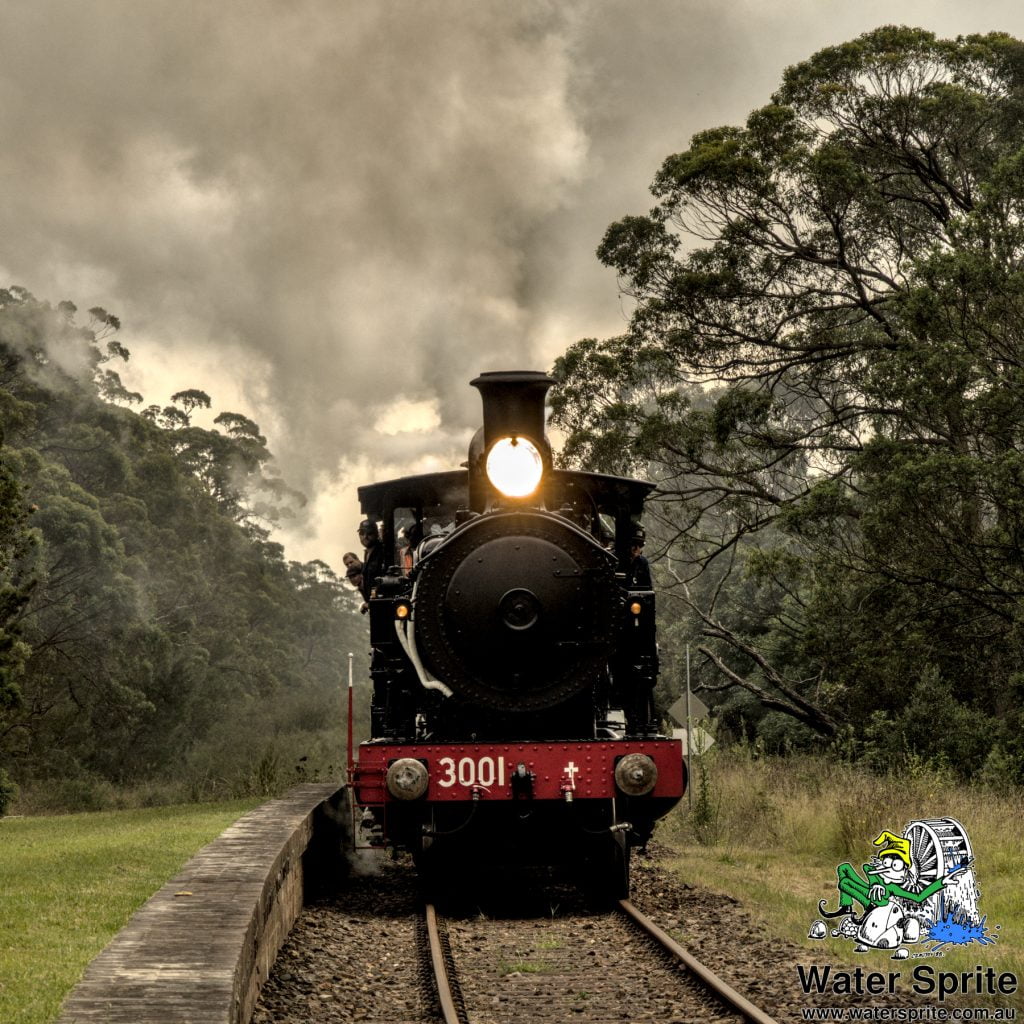
There was a bit of advertising around 3001 being back on the rails. It has apparently been in restoration for a few years and this is the first time in a while it has been seen operational. It is certainly nice to see a 122 year old engine still out doing its thing, and looking the part!
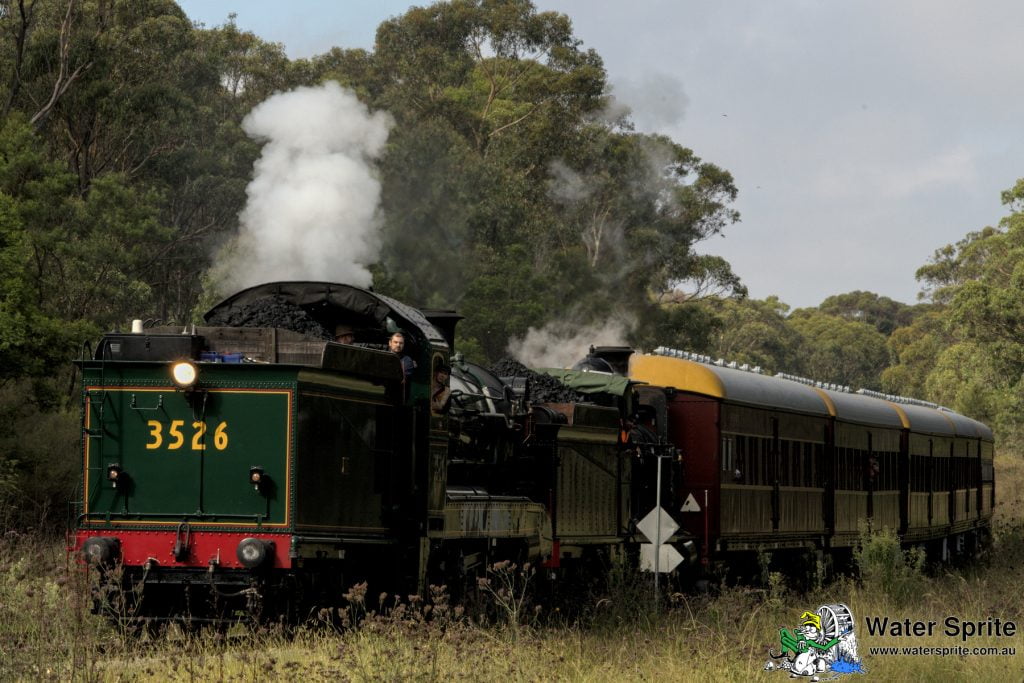
The two oldest engines out this weekend were running the Buxton direction trains. 3001 and 3526 were in double-header configuration on Saturday, although on Sunday they were running in a top-and-tail configuration. I didn’t get photos of them in action on Sunday.
The Picton direction trains
We got out early and captured the first train out and back in the Buxton direction (above photos). We then headed into Thirlmere proper to visit the Museum itself. I’ll post a few photos from around Thirlmere and the museum next week. My 70-200mm lens decided to fail at this point – I think the temperature was starting to get to it – so I had to settle with using the 24-70mm lens for the rest of the trip.
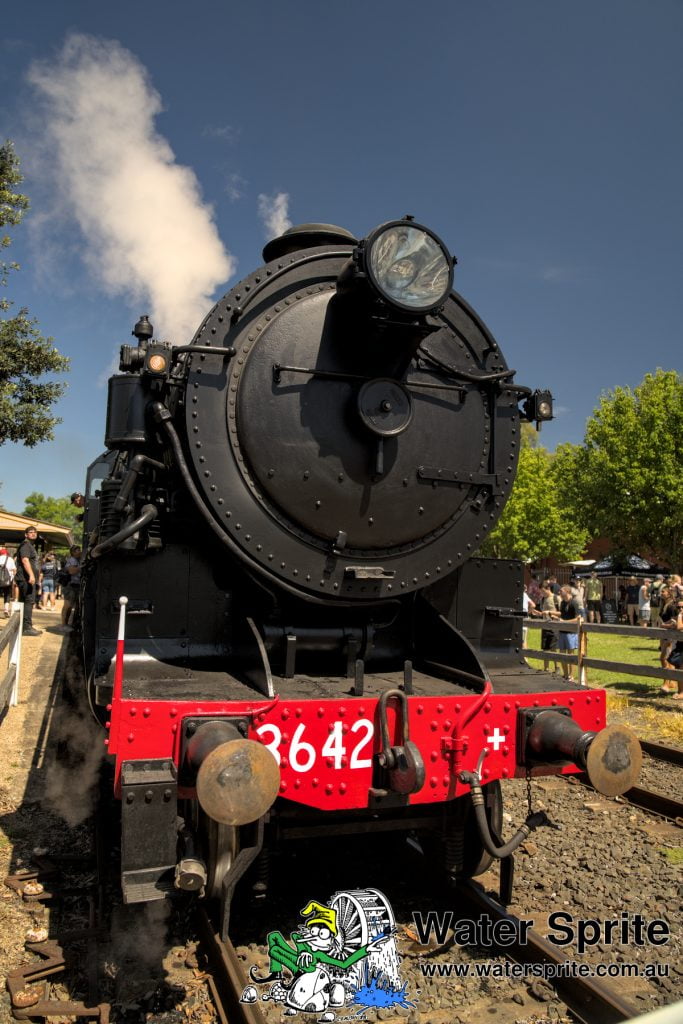
I didn’t take many photos on the train trip, although the Eldest did. I have no photos to share here from the trip. I believe on our trip, R766 was our return loco on the Buxton end of the train. Shortly after our return, however, they swapped the locos over, and R766 moved into the museum yard as an exhibit, and 3801 joined the Picton train on the Buxton end. Sadly I did not manage to get any photos of R766 at the head of the train.
After a lunch break, I managed to get some photos of the Picton direction train returning to Thirlmere Station, including my first photo of loco 3801 for the day, pulling the train over the level crossing into the station.
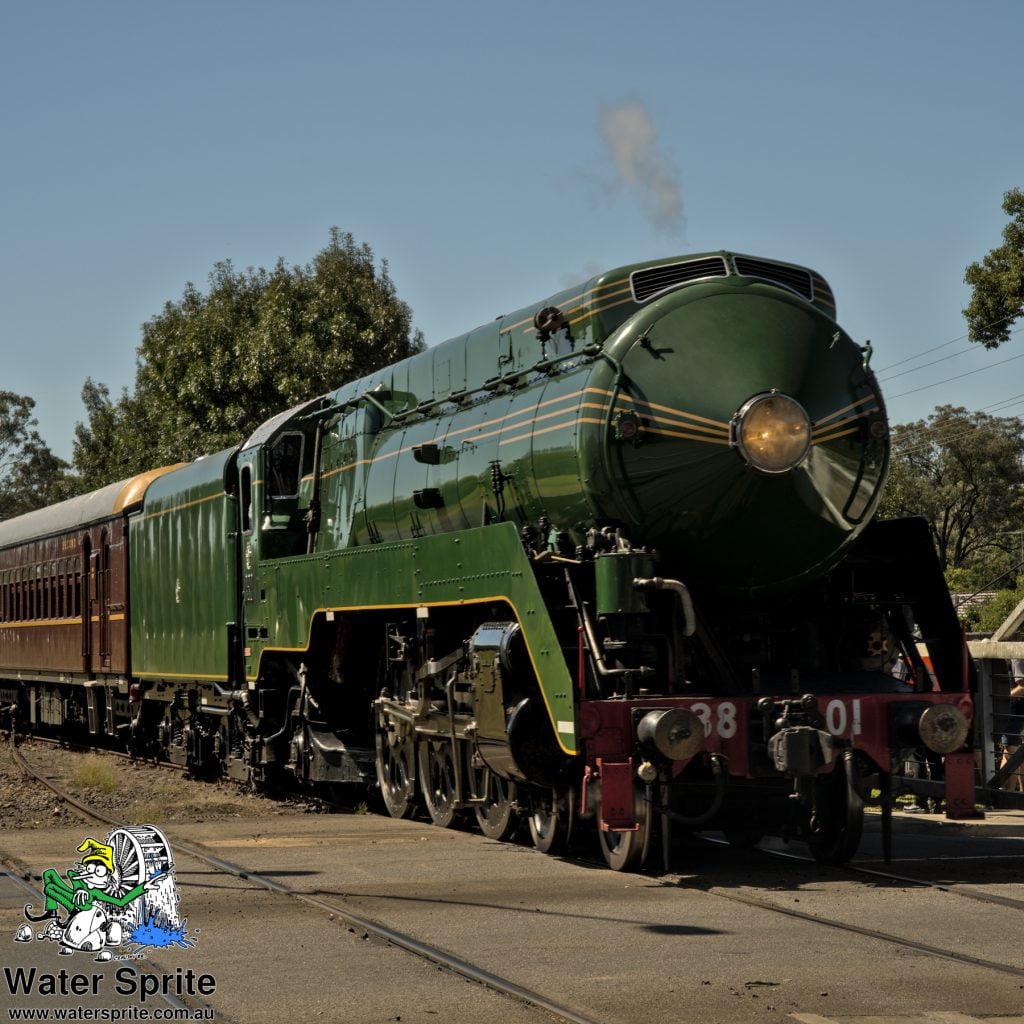
The Picton direction train was top and tailed by its engines, unlike the Buxton direction train which was (on the Saturday) running 3001 and 3526 as a double header. There isn’t anywhere for the engines to “run around” the carriages at the Picton end, so trains in this direction presumably have to run in this configuration so there is a lead engine on the train for the return journey. There is a “run around” line at Buxton, so trains in that direction can run with only one engine (or both engines in double-header configuration as they were doing on Saturday). This means that at the “tail” end of the returning train was 3642.
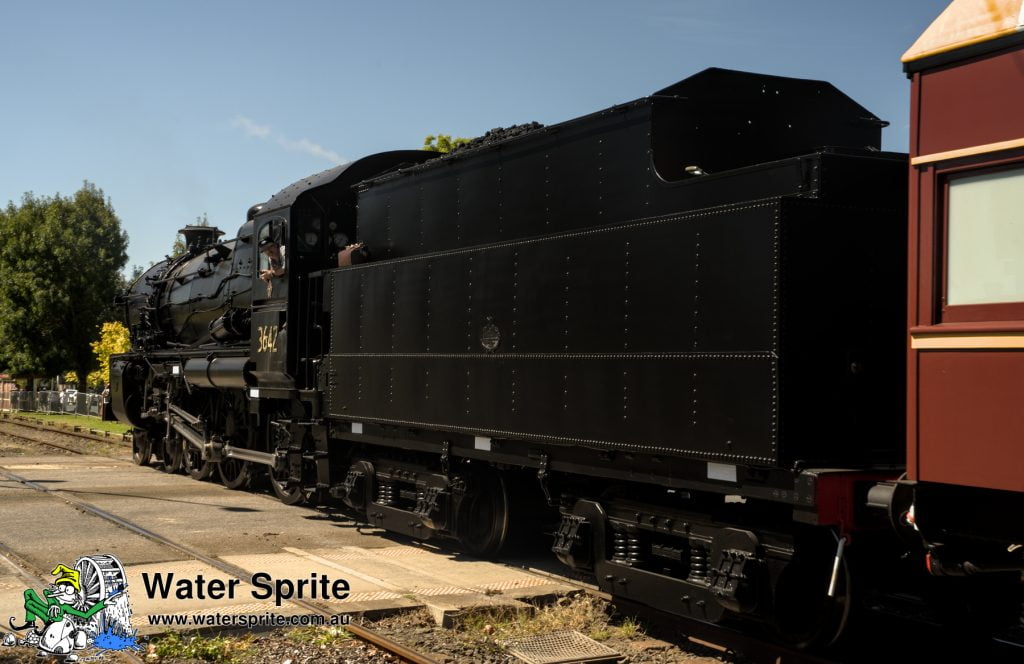
The last Picton run of the day
It was getting unpleasantly hot in the sun by this point, but we headed out from Thirlmere again – this time in the direction of Picton. Our aim was to capture the Picton direction train “in the wild”. The last run of the day was a bit extra-special – they added R766 back to the Buxton end of the train, so that it was running with 3642 on the Picton end and R766 and 3801 as a double header on the Buxton end.
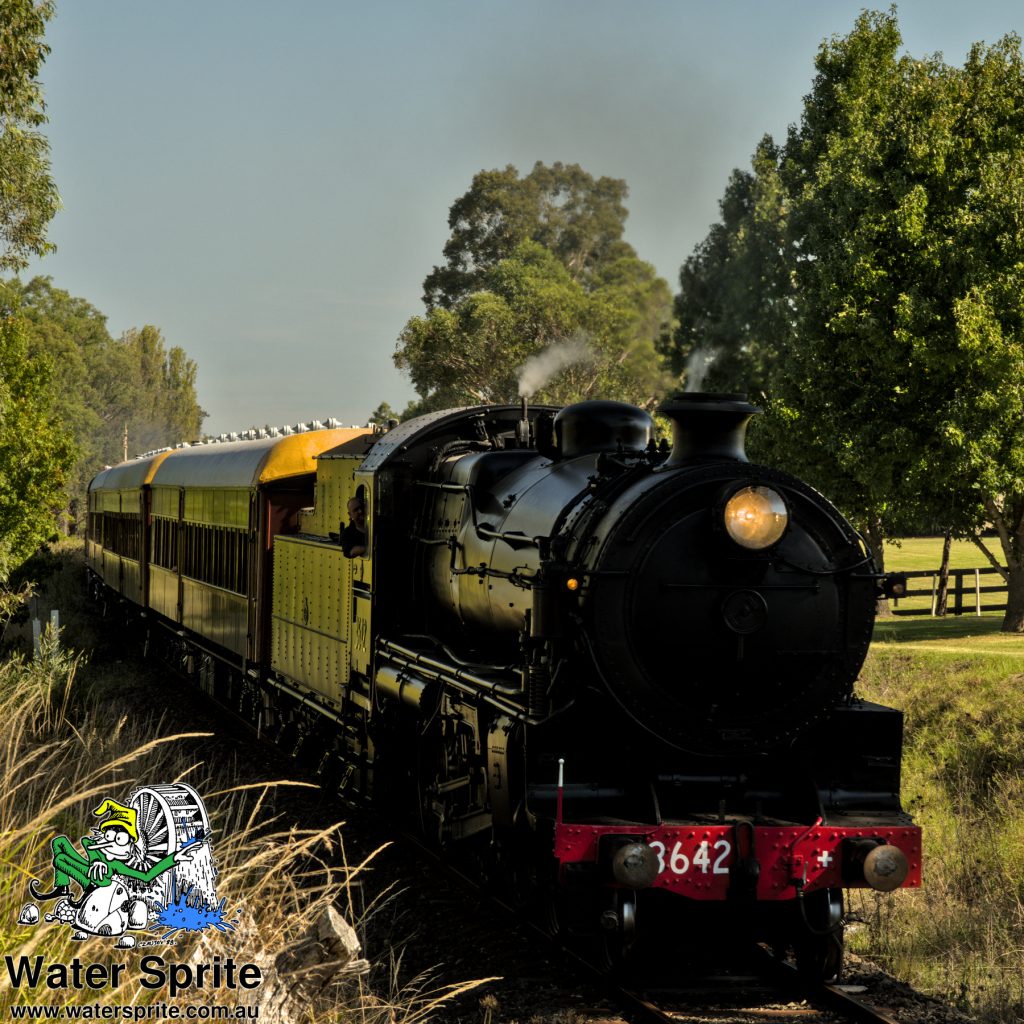
I was hoping to get some photos of that combination, but sadly none of them really show the double header configuration at all.
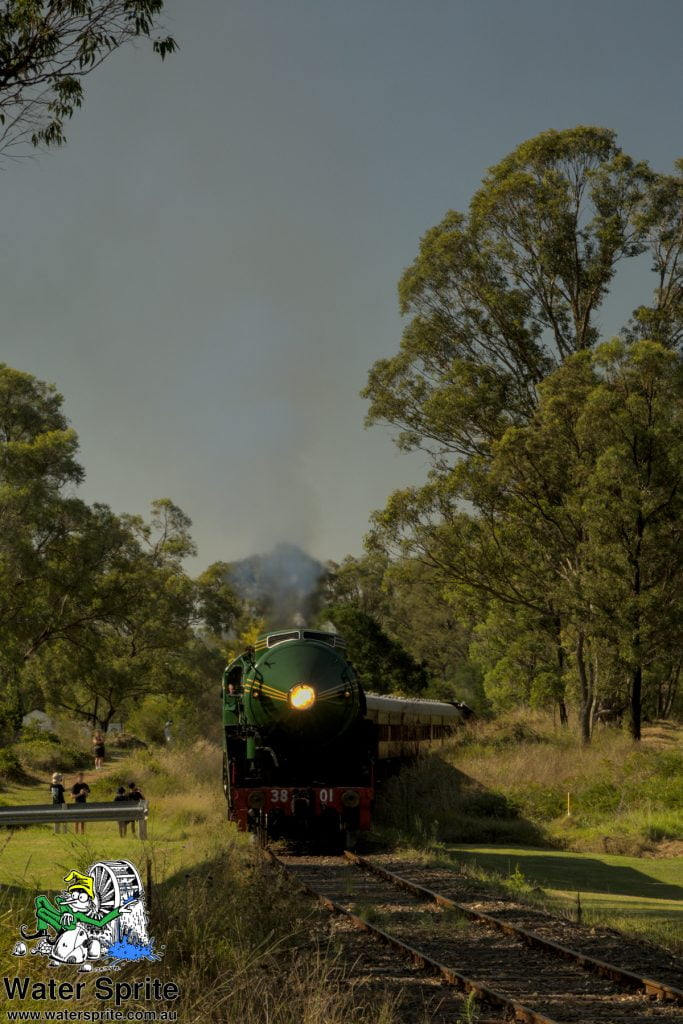
By this stage, it had become uncomfortably warm in the sun, and we decided to call it quits for the day. We did come back on the Sunday, and managed to get some more photos of the Picton direction train. Unfortunately, they were running 3801 on the Buxton end again, and not R766, so I still failed to get any good photos of R766 in action.
Leave a Reply